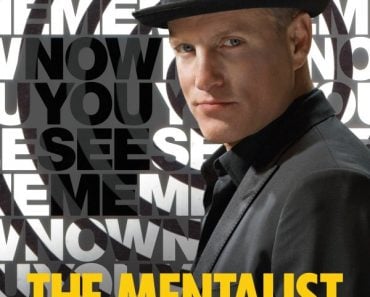Table of Contents (click to expand)
“Split” is a psychological thriller in which a protagonist with dissociative identity disorder (DID) kidnaps three girls. Does the movie portray DID in a way that is faithful to its complex reality?
While the protagonist, played by James McAvoy, provides a gripping acting performance in the 2016 horror thriller Split directed by M. Night Shyamalan, that performance reveals that the lead character lives with dissociative identity disorder (DID).
Does the movie’s depiction of this complex psychiatric condition compare with reality?
Recommended Video for you:
What Is The Dissociative Identity Disorder (DID)?
Dissociative Identity Disorder, or DID for short, is a psychiatric disorder in which an individual develops two or more distinct personalities, called alters, in response to traumatic events.
Each of these alters can have distinct names, voices and mannerisms. Individuals with DID often vacillate between these with scarce recollection of the experiences of each separate personality.
According to the Diagnostic and Statistical Manual of Mental Disorders fifth edition (DSM-5), the go-to source for how psychiatric conditions, there are 5 criteria for a DID diagnosis
- Co-occurrence of two or more distinct identities or personality states. Each of these must have their own consistent way of perceiving, relating to, and thinking about the environment and self.
- Amnesia or gaps in the recall of everyday activities, personal information, and/or traumatic events.
- Significant distress or trouble functioning in one or more major areas of life as a result of the disturbance.
- The disturbance is not part of any cultural or religious ritual.
- The symptoms experienced are not the outcome of a substance (like erratic behavior and impulsivity following alcohol intoxication) or a general medical condition (such as complex partial seizures).
Until 1994, the disorder was known as multiple personality disorder (which also has its fair share of movie [mis]representation). The name was eventually changed to DID to match with what truly happens in the condition: fragmentation or splintering of one identity, rather than the proliferation or growth of separate individual personalities.
Given that DID is a complex disorder, it often goes unrecognized. In fact, Dr. Peter Barach, a clinical psychologist from Cleveland Clinic, believes that most mental health professionals are not trained to accurately recognize the disorder. Most patients must go through an average of six to seven rounds of incorrect diagnoses before DID is accurately identified.
The condition is considered rare, with an estimated 1.5% of the global population living with condition.
Split And DID Alters
Coming back to Split… the basic premise of the film is that three girls, Claire (Haley Lu Richardson), Casey (Anya Taylor-Joy) and Marcia (Jessica Sula) are abducted by a man named Kevin (James McAvoy). Kevin has DID, and his alters are linked to the kidnappings.
The basics of the DID shown in the movie overlaps with the above definition from the DSM-5.
In the movie, we’re shown that Kevin has 24 different alters inside him. That sounds like a large number, but is it common to have that many alters? It’s difficult to be sure. In a report, Dr Paulette Gillig from Wright State University, noted that, “Typically by the time they are adults, DID patients report up to 16 alters (adolescents report about 24), but most of these will fade quickly once treatment is begun.”
Considering that we’re shown that Kevin has a psychiatrist he visits, his living with all 23 alters might be an exaggeration.
His diagnosis stems from an early childhood history of abuse and abandonment. By developing multiple alters, he is able to shield his mind from the pain induced by years of abuse.
Indeed, there is a strong link between DID and childhood trauma.
Seminal psychologists, including Bowlby, propose that DID may be an attachment disorder, in which a child who has been neglected by their mother (or other primary caregiver) uses dissociation to cope with the overwhelming pain of abandonment. Indeed, this condition developed after Kevin had to endure several years of trauma under the custody of his abusive, obsessive-compulsive mother as a child.
‘Barry’ in consultation with Kevin’s therapist, Dr. Karen Fletcher
Myths About DID In Split
Even though the basics of our contemporary understanding of DID overlap with what’s shown in the movie, the movie is also built on myths of DID.
The first major myth lies in the representation of the alters and DID; the portrayal is stereotypical and villainized.
Of the 24 alters, we see the “nefarious” ones. There is ‘Barry,’ who seems to share personality traits with Kevin’s mother: both display compulsive cleaning habits, and are cold, temperamental and vindictive. There is Patricia, a British orderly and polite woman who holds a delusional belief in a mythical entity called ‘The Beast’. ‘The Beast’ is yet another alter who wants to rid the world of people that are ‘impure’ or who have never suffered. And there is ‘Dennis’, the alter that kidnapped the three girls because he enjoys watching young girls dance naked.
Such portrayals feed into the stereotype that disorders such as DID are inherently criminal and dangerous, which only further stigmatizes the disorder. This is contrary to what evidence shows us. Having experienced years of abuse, victims of DID are actually on the receiving end of violence and are less likely to perpetrate it.
Although a 1.5% global prevalence seems low, it is actually on par with the number who are diagnosed with obsessive compulsive disorder (OCD).
Another common error, on the part of specialists, is the inability to discern DID from other psychiatric disorders, especially schizophrenia. Alters developed by DID patients can often be mistaken as ‘delusions.’ Alters are also often experienced as auditory hallucinations. Auditory hallucinations or ‘hearing voices’ is a cardinal symptom of Schizophrenia, which can lead to erroneous diagnoses.

Apart from portraying the disorder in a negative light, its treatment is also poorly represented, as psychologists Bethany Brand and Danielle Pasko note in their own review of the psychology in the movie. The therapist is shown to be overly invested in Kevin, breaking professional boundaries by going unannounced to Kevin’s home when she suspects that he is in crisis. She also makes a serious error by blindly viewing Kevin as ‘superior’ to the general public due to his battle and survival against years of hardship. Indeed, she muses in the movie, “What if people who’ve been shattered are more, not less?”
Rather than being overly obsessed with DID patients, DID experts recommend that therapists set clear boundaries with their patients so that they do not feel threatened.
A Final Word
Overall, Split is a riveting film that has caught the eye of not just the general audience, but also healthcare professionals. While the movie places DID in the spotlight, it fails to accurately represent the disorder.

This is exemplified not only by bestowing Kevin’s alters with exaggerated symptoms and villain-like traits, but also by making his therapist overly invested and disrespectful. Furthermore, portraying the kidnapped girls as innocent, helpless victims preyed on by the mentally ill further makes the movie’s portrayal of DID unjust.
References (click to expand)
- Dissociative Identity Disorder: What Is It, Symptoms & ....
- http://hdl.handle.net/1794/1448
- Sutrisno, B., & Meilina, M. (2020, September 4). An Analysis Of Dissociative Identity Disoder (Did) Experienced By Kevin In The Movie “Split”. Journal of English Language and Literature (JELL). Sekolah Tinggi Bahasa Asing IEC Jakarta.
- Gillig P. M. (2009). Dissociative identity disorder: a controversial diagnosis. Psychiatry (Edgmont (Pa. : Township)), 6(3), 24–29.
- Webermann, A. R., & Brand, B. L. (2017, January 23). Mental illness and violent behavior: the role of dissociation. Borderline Personality Disorder and Emotion Dysregulation. Springer Science and Business Media LLC.












